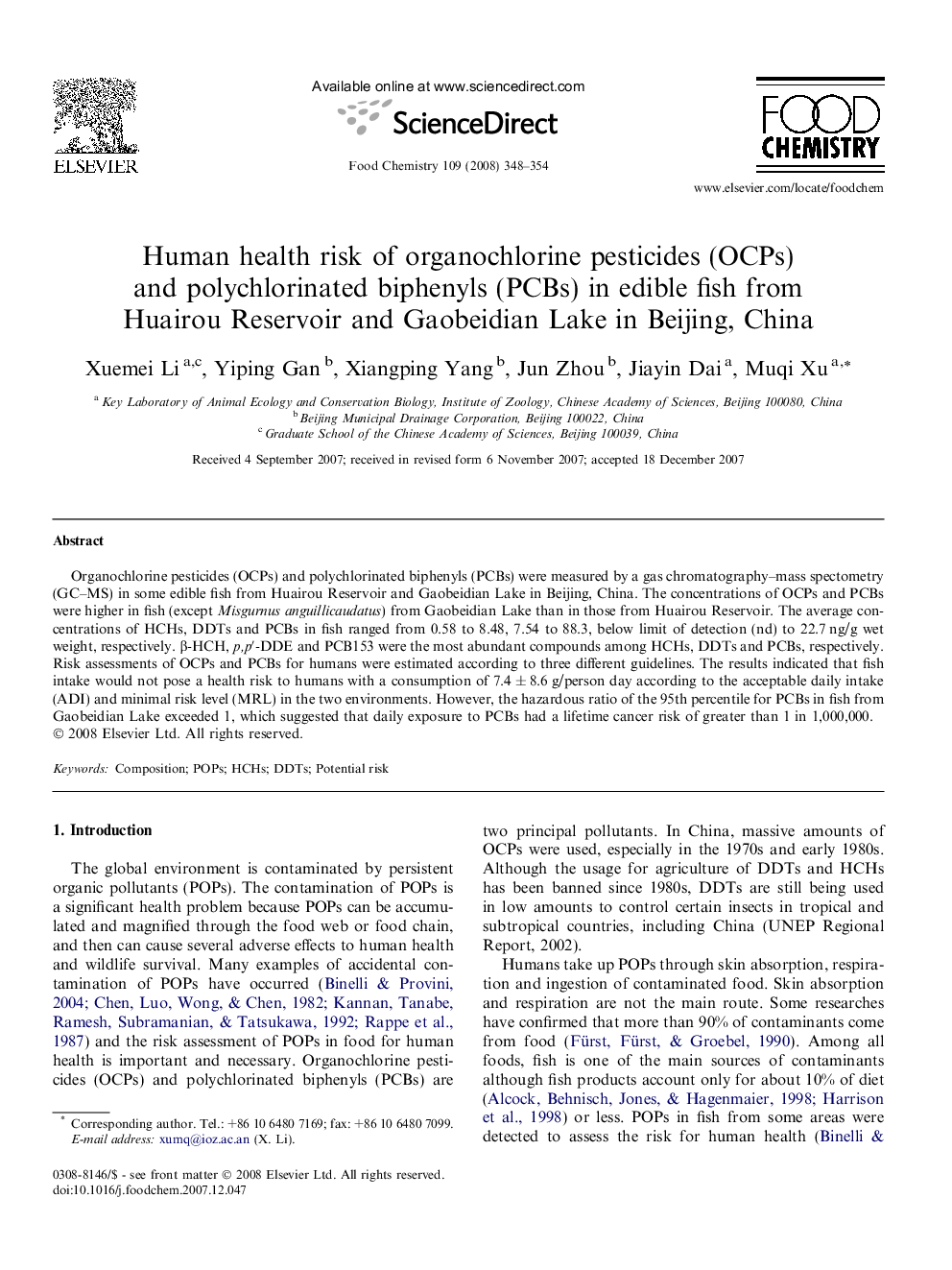| Article ID | Journal | Published Year | Pages | File Type |
|---|---|---|---|---|
| 1188360 | Food Chemistry | 2008 | 7 Pages |
Organochlorine pesticides (OCPs) and polychlorinated biphenyls (PCBs) were measured by a gas chromatography–mass spectometry (GC–MS) in some edible fish from Huairou Reservoir and Gaobeidian Lake in Beijing, China. The concentrations of OCPs and PCBs were higher in fish (except Misgurnus anguillicaudatus) from Gaobeidian Lake than in those from Huairou Reservoir. The average concentrations of HCHs, DDTs and PCBs in fish ranged from 0.58 to 8.48, 7.54 to 88.3, below limit of detection (nd) to 22.7 ng/g wet weight, respectively. β-HCH, p,p′-DDE and PCB153 were the most abundant compounds among HCHs, DDTs and PCBs, respectively. Risk assessments of OCPs and PCBs for humans were estimated according to three different guidelines. The results indicated that fish intake would not pose a health risk to humans with a consumption of 7.4 ± 8.6 g/person day according to the acceptable daily intake (ADI) and minimal risk level (MRL) in the two environments. However, the hazardous ratio of the 95th percentile for PCBs in fish from Gaobeidian Lake exceeded 1, which suggested that daily exposure to PCBs had a lifetime cancer risk of greater than 1 in 1,000,000.
